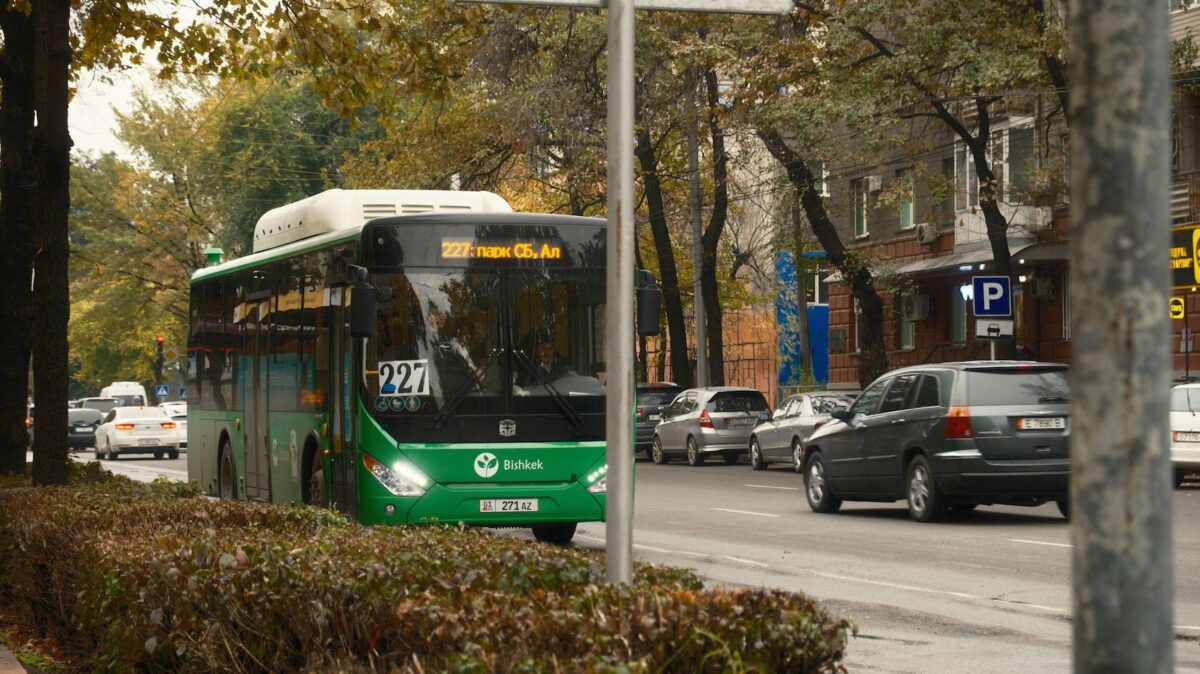Landlocked and often overshadowed by its more populous and economically powerful neighbours, Kyrgyzstan has long struggled to carve out a niche for itself.
Yet the country’s economic trajectory today reflects not just its Soviet past or its current reliance on a single major gold mine and abundant remittances, but also new regional integration efforts, evolving foreign investment climates, and a youthful domestic population eager for upward mobility.
Recent data suggest that Kyrgyzstan’s economy is showing a degree of resilience; indeed, robust dynamism. Growth has been impressive: an average of around seven per cent for the past few years, with real GDP expanding by 8.1 per cent in the first half of 2024—the highest level of any country in emerging Europe and Central Asia.
This growth is being driven by consumption, exports, and investment. On the production side meanwhile, growth has been supported by construction and services.
Nevertheless, the Kyrgyz economy remains small, with a GDP hovering near the 14 billion US dollars mark, and per capita GDP is still below 2,000 US dollars per year.
Yet these raw figures do not fully capture the country’s complexity. Kyrgyzstan’s membership in the Eurasian Economic Union (EAEU) has deepened its commercial ties with Russia, Kazakhstan, and other regional states. Money sent home by Kyrgyz workers abroad—particularly in Russia—still accounts for nearly a third of GDP, among the highest remittance-dependencies in the world.
These steady inflows have underpinned household spending and helped to sustain local businesses despite global headwinds.
The role of mining
To be sure, Kyrgyzstan’s growth is not derived from a broad base. A major source of foreign exchange is a single gold mine, Kumtor, which has long been the crown jewel of the economy.
Its output can dramatically influence official growth figures. When gold prices are strong, Kyrgyzstan’s exports and tax revenues improve; when they dip, the country’s weaknesses—structural unemployment, poor infrastructure, limited diversification—come into sharper focus.
The reliance on gold is both a blessing and a curse. While the metal’s extraction props up the national balance sheet, it also distracts from the slow grind of building competitive, value-added sectors. Worse, it has been at the center of fierce political controversies, including disputes with foreign investors who once managed the mine. A recent political spat over mining assets—culminating in the state’s expropriation of the Kumtor mine from Canada’s Centerra Gold in 2021—has set a cautionary tone for newcomers who might consider placing their capital in Kyrgyzstan.
Other sectors
Mining aside, the country’s economic landscape is dominated by agriculture and services. Agriculture, though contributing a declining share of GDP, remains a large employer, with small-scale farmers producing fruits, vegetables, and dairy.
But productivity lags behind potential, hamstrung by outdated irrigation, fragmented land holdings, and limited access to modern inputs.
Services, in contrast, have grown more dynamic, bolstered by cross-border trade and the informal sector’s nimbleness. In the capital, Bishkek, small retail outlets, restaurants, and entrepreneurial start-ups are springing up, but scaling beyond the city’s confines is tough.
Meanwhile, the energy sector, with Kyrgyzstan’s considerable hydropower resources, holds latent promise. Hydroelectric plants supply electricity to domestic consumers and, increasingly, to neighboring countries. Yet here, too, the legacy of poor management, underinvestment in transmission lines, and frequent power outages undercuts the country’s ambitions to become a reliable regional energy hub.
Tourism
A brighter note is the potential for tourism. The country’s picture postcard scenery—crystal-clear alpine lakes, soaring mountain ranges, and ancient Silk Road caravansaries—has long drawn adventurous travelers.
More recently, as Central Asia opens up, the government and private sector are eyeing a future in which Kyrgyzstan can offer not just nature-based getaways for backpackers but also cultural tours for regional holidaymakers and adventure tourism for high-spending visitors from further afield.
There are bottlenecks, however: the tourism infrastructure is rudimentary, with patchy transport links, limited English-language services, and insufficient mid-range accommodation. Developing these offerings will take time, strategic investment, and a more sophisticated marketing effort.
Democratic but turbulent
On the political stage, Kyrgyzstan’s path since independence in 1991 has been punctuated by revolution, constitutional tinkering, and recurring bouts of political volatility. The relatively pluralistic politics, at least compared to the neighbours, has allowed for civil society to voice discontent and for opposition figures to push back against entrenched interests.
But it has also led to unstable policymaking and regular bouts of violence. Governments come and go, and economic policies are often adjusted or reversed, introducing an unwelcome element of unpredictability for foreign investors.
Presidential and parliamentary power struggles, shifting constitutional models, and differing approaches toward Russia, China, and the West have all impacted the economic arena.
Earlier this month, the head of the government in Kyrgyzstan, Akylbek Japarov, was dismissed by the president, Sadyr Japarov, amid an ongoing fraud scandal involving the country’s tax service. Japarov’s firing came as something of a surprise, as he was viewed as a generally steady and capable administrator since taking up his post in 2020.
He has been replaced by Adylbek Kasymaliyev. Kasymaliyev served as deputy Chief of Staff in the presidential administration from 2021 before being appointed first deputy head of the Cabinet in June 2022.
Overall, while the political mood is currently more stable than in previous upheavals—Japarov’s administration seems determined to consolidate its authority—the memory of past instability lingers in the minds of potential investors.
Challenges for investors
Foreign investors and multinational firms considering Kyrgyzstan face multiple challenges. Beyond the obvious structural issues—small market size, difficult geography, and limited institutional capacity—there are more subtle deterrents.
Chief among them is the fragile rule of law. Investors complain of erratic enforcement of contracts, opaque legal procedures, and occasional official meddling in commercial disputes.
The controversies over the Kumtor mine are emblematic. After years of wrangling over environmental compliance, taxes, and alleged corruption, the government assumed full control of the mine in 2021. While nationalists celebrated this ‘victory’ over foreign corporate interests, it rattled investor confidence. Even though, in 2022, a settlement finally ended the feud with Centerra, the damage to Kyrgyzstan’s reputation as a stable investment destination had already been done.
Another complication is the extent of state intervention in the economy. The Kyrgyz state lacks the deep coffers to fund grandiose industrial policies, but it has not fully embraced a laissez-faire approach either. Officials often talk up economic liberalism and the importance of small and medium enterprises, yet foreign businesspeople frequently report navigating a patchwork of licenses, permits, and informal fees.
Cronyism and corruption remain real concerns, leading some investors to think twice about entering the market at all. According to Transparency International’s Corruption Perceptions Index, Kyrgyzstan lags behind many of its neighbours, fueling scepticism about long-term profitability and legal certainty.
Geopolitics
Then there is the matter of geopolitical balancing. Kyrgyzstan must manage its relationship with Russia carefully, given how heavily it depends on Russian trade, security cooperation, and opportunities for migrant labourers.
Russia’s war in Ukraine, which triggered unprecedented Western sanctions on Moscow, forced Kyrgyzstan to walk a diplomatic tightrope. The country did not sever ties with Russia, and indeed has seen an unexpected economic uptick from the arrival of Russian IT workers and other professionals seeking to avoid the draft or business disruptions at home.
In the short run, this influx of migrants has boosted consumption and entrepreneurship, with Russians launching new firms and investing in local real estate. Yet the long-term implications are less clear. If ties with Moscow sour or if the Russian economy continues to struggle, Kyrgyzstan risks losing a key economic patron and a major source of remittances.
Meanwhile, China looms large to the east. Beijing is already an important partner, having financed roads, power lines, and other infrastructure projects that knit Kyrgyzstan more tightly into the Belt and Road Initiative.
Chinese loans have helped modernise some aspects of the Kyrgyz economy but have also raised concerns about debt dependence and sovereignty. Local protests have sometimes targeted Chinese companies accused of exploiting resources or disregarding local labour interests. Kyrgyz authorities must ensure that cooperation with China yields tangible benefits for local communities, not just for elites or foreign contractors.
The potential is there
As a result, Kyrgyzstan’s future growth prospects depend on adept navigation of these geopolitical crosscurrents and the skillful diversification of its economic base.
What might help is a more coherent effort to reform domestic institutions. Ensuring greater judicial independence, clarifying property rights, and creating a more transparent regulatory environment would go a long way toward reassuring jittery investors.
Improving the educational system and providing vocational training could help move the country up the value chain, reducing reliance on low-skill labour exports and strengthening small industries capable of exporting regionally.
Government schemes to modernise agriculture—such as introducing drip irrigation, consolidating smallholdings, and establishing farmer cooperatives—could unlock more stable revenues and improve food security.
Attracting foreign direct investment that contributes to long-term productive capacity is another priority. The authorities have promised incentives for firms venturing into manufacturing, information technology, green energy, and tourism-related services.
In principle, Kyrgyzstan’s membership in the EAEU provides a common market of some 180 million consumers—a tempting proposition for companies that can navigate the union’s rules and supply chains. If foreign firms can rely on stable terms and swift dispute resolution, more may be willing to test the waters.







